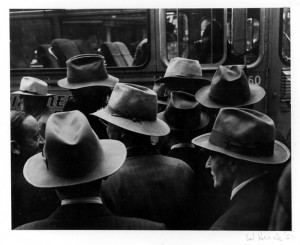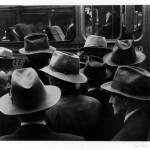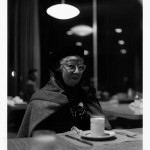 Though William Heick is best known for his ethnographic photographs and documentary films of Native American cultures, his early work focused on street life in 1940s and 1950s San Francisco. His vibrant portraits capture the dynamic community of the city and the surrounding countryside — the artists, entertainers, industrial workers, cotton pickers, and street people who populated the mid-century San Francisco area.
Though William Heick is best known for his ethnographic photographs and documentary films of Native American cultures, his early work focused on street life in 1940s and 1950s San Francisco. His vibrant portraits capture the dynamic community of the city and the surrounding countryside — the artists, entertainers, industrial workers, cotton pickers, and street people who populated the mid-century San Francisco area.
Heick was born in 1916 in Kentucky, attended the University of Cincinnati, and began his photographic career as a navel intelligence photographer during World War II. After the war, he moved to San Francisco and studied at the California School of Fine Arts (now the San Francisco Art Institute) under a cadre of instructors that included Ansel Adams (1902-1984). It was during this time that he focused his lens on contemporary urban life. He became friends with Imogen Cunningham (1883-1976) and Dorothea Lange (1895-1965), whom he cites today as his greatest influences.
In Imogen Cunningham (1949), Heick turns the camera on the photographer herself. She appears sweet and grandmotherly, with her glass of milk and wooly hat, but her solitary presence in a nighttime diner hints at a more idiosyncratic and independent life. Heick’s portraits of artistic luminaries, including the photographer Edward Weston (1886-1958), the author Aldous Huxley (1894-1963), the painter Mark Rothko (1903-1970), and the musician Count Basie (1904-1984), are similarly informal. The unceremonious tone of these portraits, as well as their frequent use of the close-up, indicates the photographer’s intimacy with his subjects and his ability to relate with their positions as artists.
Hats (1951) depicts a crowd of unemployed men waiting for a bus to take them to a free Fathers’ Day picnic. At first glance, the crowd of similarly dressed men seems to convey the conformity of corporate life in the 1950s when, in fact, the story behind the photograph deals with poverty and unemployment. The tight arrangement of men within the frame, the absence of open space, and the cluster of hats pointed in the same direction give the image an energetic, workaday rhythm that belies the unfortunate economic status of its subjects.
- William Heick: “Hats,” 1951
- William Heick: “Imogen Cunningham,” 1949
Written by Jennie Waldow, 2009-2010 Wilson Intern



